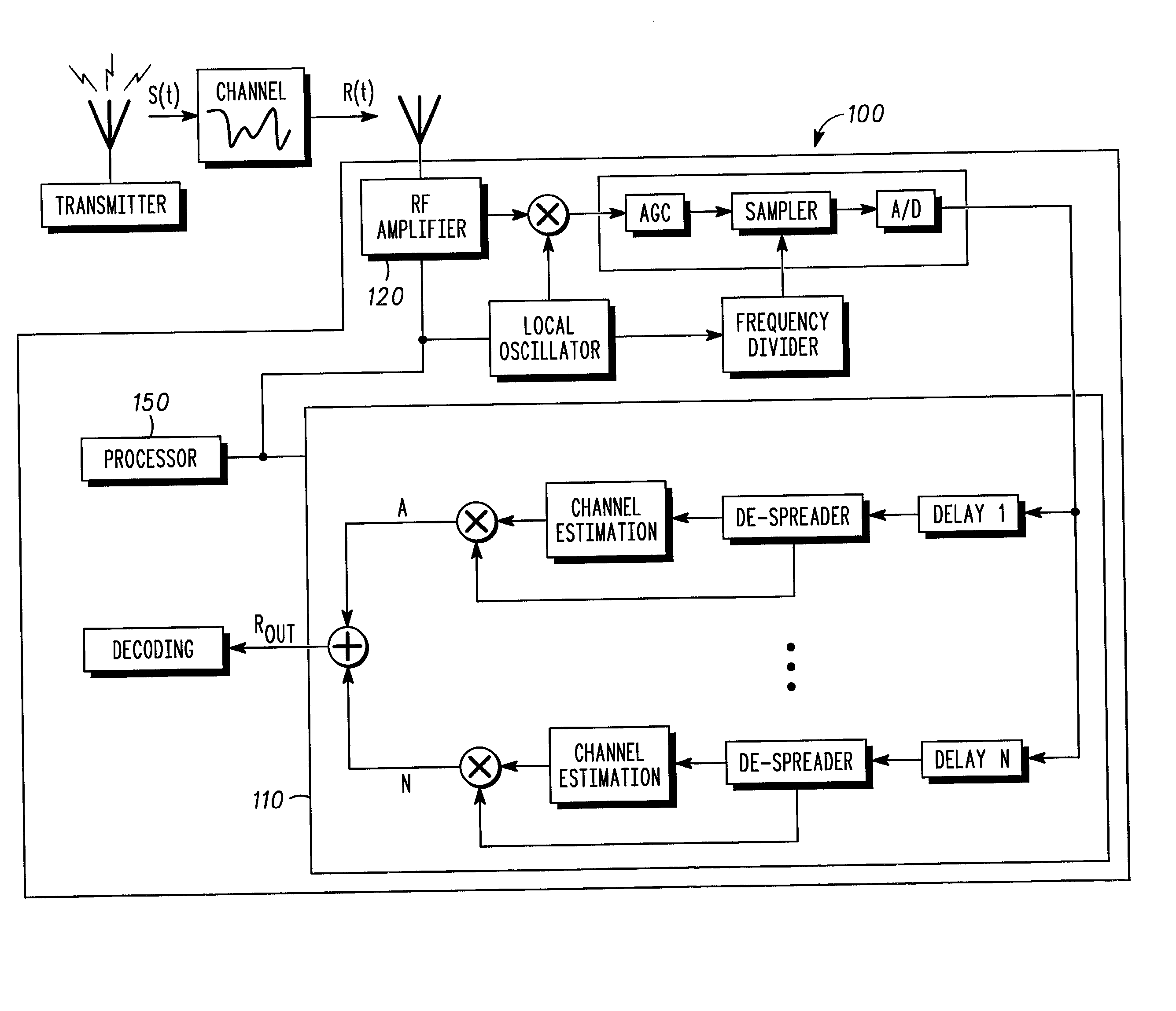Doppler spread/velocity estimation in mobile wireless communication devices and methods therefor
a technology of mobile wireless communication and spread/velocity estimation, which is applied in the field of mobile wireless communication devices, can solve the problems of poor system performance, poor noise immunity, and estimation degradation
- Summary
- Abstract
- Description
- Claims
- Application Information
AI Technical Summary
Problems solved by technology
Method used
Image
Examples
Embodiment Construction
[0011] In the present invention, Doppler spread is estimated in mobile wireless communication devices, for example cellular telephone handsets, personal digital assistants, wireless enabled computers, etc.
[0012] In one embodiment, the Doppler spread estimation is based on the real part of an estimated autocorrelation function of the impulse response of a channel over which a signal is communicated. Further references herein for the estimated autocorrelation function refers to the real part thereof. And in another embodiment, the Doppler spread estimation is based on an estimated autocovariance function of the magnitude squared of the impulse response of a channel over which a signal is communicated. The Doppler spread estimates of the present inventions have, among other advantages over the prior art, improved noise immunity.
[0013] In FIG. 2, at block 200, the autocovariance or the autocorrelation function is estimated. The estimation of autocorrelation or autocovariance functions i...
PUM
 Login to View More
Login to View More Abstract
Description
Claims
Application Information
 Login to View More
Login to View More - R&D
- Intellectual Property
- Life Sciences
- Materials
- Tech Scout
- Unparalleled Data Quality
- Higher Quality Content
- 60% Fewer Hallucinations
Browse by: Latest US Patents, China's latest patents, Technical Efficacy Thesaurus, Application Domain, Technology Topic, Popular Technical Reports.
© 2025 PatSnap. All rights reserved.Legal|Privacy policy|Modern Slavery Act Transparency Statement|Sitemap|About US| Contact US: help@patsnap.com



